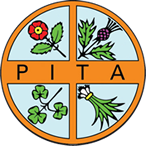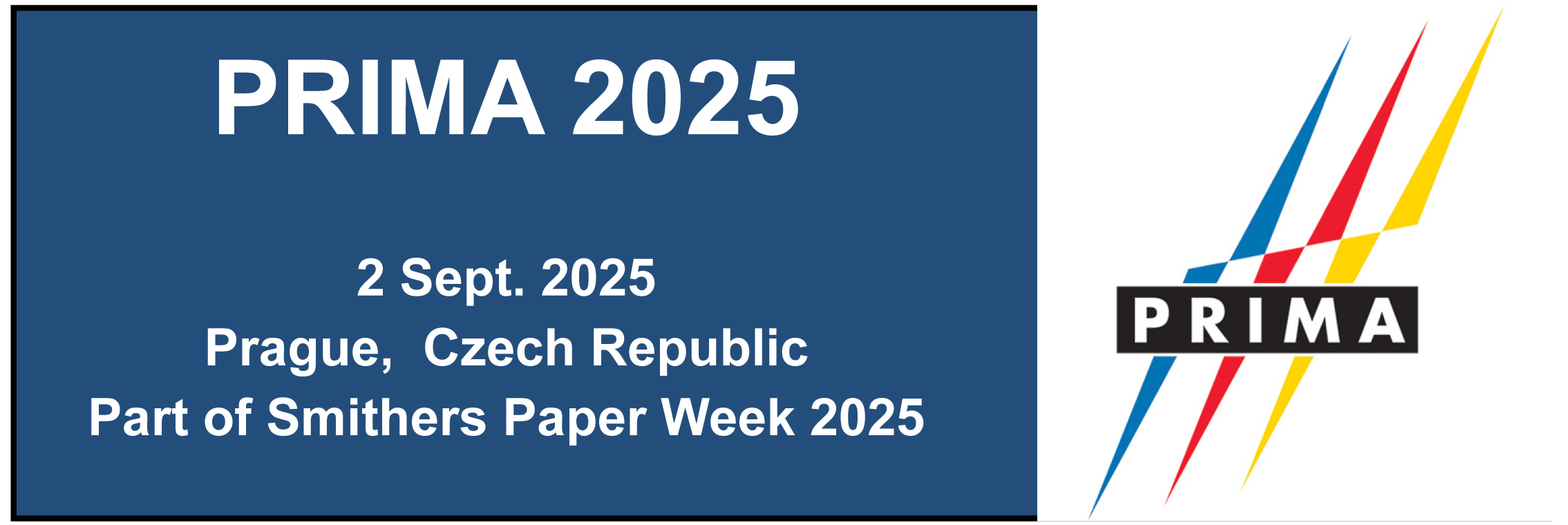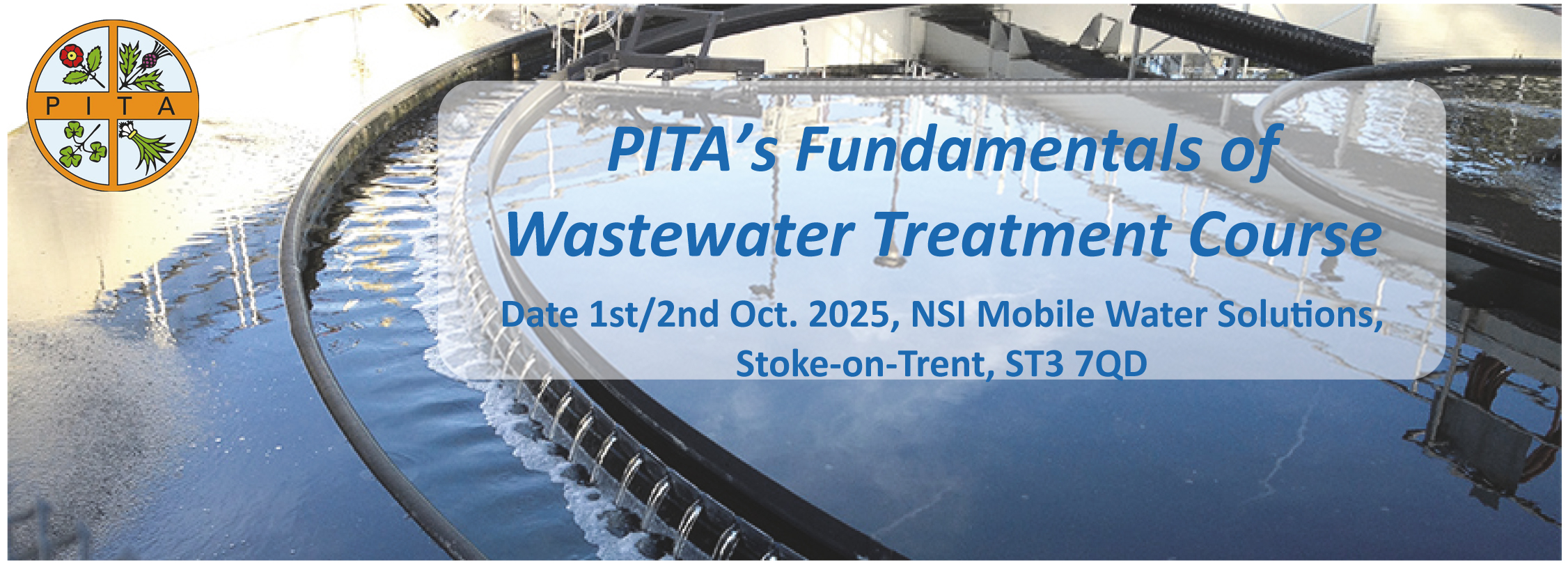Improving Energy Efficiency in Papermaking
Improving Energy Efficiency in Papermaking:
- Improving energy utilisation
- Reducing carbon emissions
- Finding efficiency solutions
COST Strategic workshop. 9-11 June 2008, Hoofddorp, the Netherlands.
Edited by the Programme Committee consisting of:
Kari Edelmann, VTT; Werner Förster, EFPRO; Harald Grossmann, TU Dresden (Chairman); Arie Hooimeijer, KCPK; Marco Lucisano, STFI-Packforsk; Barry Read, The Fibre Technology Association; Günter Siegel, COST.
28 pages, PDF. Download a copy by clicking here.
IMPROVING ENERGY EFFICIENCY IN PAPERMAKING 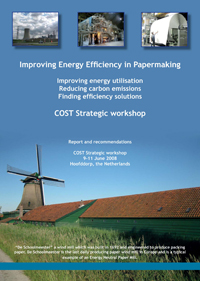
- INTRODUCTION
- BACKGROUND
- OBJECTIVES
- THE WORKSHOP
SESSION 1: “SETTING THE SCENE”
- CURRENT STATUS OF ENERGY EFFICIENCY
- CONCLUSIONS “SETTING THE SCENE”
SESSION 2A: “BEST PRACTICES-WHAT COULD BE DONE BETTER?”
- CURRENT BEST PRACTICES
- CONCLUSIONS “BEST PRACTICES”
SESSION 2B: “NEXT PRACTICES-WHAT COULD BE DONE DIFFERENTLY?”
- FUTURE INNOVATIONS
- CONCLUSIONS OF “NEXT PRACTICES”
SESSION 3: “THE FUTURE; TRENDS, DEVELOPMENTS AND PROSPECTS”
- TRENDS, DEVELOPMENTS, PROSPECTS
- ROUNDTABLE DISCUSSION
- ROADMAP TOWARDS 2020
OVERVIEW PRESENTATIONS AT THE WORKSHOP
The Future of Paper Recycling in Europe
The Future of Paper Recycling in Europe: Opportunities and Limitations. COST Action E48
edited by Bartek Stawicki & Barry Read, PITA, 2010, A5, 208 pages. Free. Contact PITA to obtain a copy (This email address is being protected from spambots. You need JavaScript enabled to view it.) - note that limited copies remain. A digital version can be downloaded by clicking here.
The main objective of the Action was to develop scenarios describing the future use of recovered paper within the European paper industry in order to provide a better background for focussed research activities in the field as well as to facilitate investment decisions.
The benefits of the Action are the sound base for targeted research, provision of necessary arguments in the discussion with government organizations, guidelines for the design of recycling-friendly paper products, guidelines for more effective, tailor-made collection strategies for used paper and a background for investment decisions.
Chapter 1 - COST Action E48
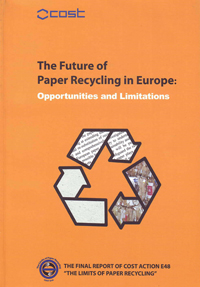
1. Backrgound & Motivation
2. Objectives & Expected Benefits
3. Work Programme
4. Participating Countries & Institutions
5. The Organisation
6. Major Research Projects on Paper Recycling
Chapter 2 - The Status of Paper Recycling in Europe
1. Introduction
2. Definitions
3. Statistics
4. Collection & Sorting Systems
5. Current Composition & Quality of Recovered Paper
6. State-of-the-Art in Treatment Technologies
7. Use of Recovered Paper in Different Paper Grades
8. End Uses of Recovered Paper other than Papermaking
9. Recovered Paper Market & Trade Issues
10. Legislation and Regulations
11. Conclusions Concerning the Current Status of Paper Recycling in Europe
Chapter 3 - The Future of Paper Recycling in Europe
1. Future Trends relevant for Paper & Board Recycling
2. Scenarios for Paper and Board Recycling in Europe
3. Assessment of the Scenarios
Paper and Board Manufacture
Eds. Julius Grant, James h. Young & Barry G. Watson, Technical Division of the British Paper and Board Industry Federation, London, 1978. Hard cover, 23.5 x 15.5 cm, 434 pages. ISBN 0-900219-05-X
Although this publication is around four-decades old, it still forms one of the best primers for the paper, paperboard and pulp industry. It was written primarily for new entrants into the industry; however, it was also assumed those already working in the industry or with some experience of it should find valuable information on aspects with which they may not be familiar, and possibly a new insight into operations principles and developments in their own branch. In addition, technologists in other industries, in education, or in local or national Government and many other fields, who require an introduction to the subject or to extend their existing knowledge, were also expected to find the book of great help.
Chapter listing:
- Historical Introduction: Hand Made Paper

- The Nature and Uses of Paper and Board
- Natural Plant Fibres for Papermaking
- Pulping Methods – Wood
- Pulping Methods – Fibres other than Wood
- Pulp Screening, Cleaning, Bleaching and Finishing.
- Secondary Fibre in Paper and Board Making
- Stock Preparation
- Stock Additives and Final Stock Preparation
- The Papermachine – Wet End
- The Papermachine – Dry End
- Boardmaking
- Paper After-Treatments (Dry) and Finishing
- Paper After-Treatments (Wet)
- Mill Location and Services
- Testing and Control Methods
- Glossary
- General Reading List
Paper Science and Paper Manufacture
John D. Peel, Angus Wilde Publications Inc, Vancouver, 1999. Hard cover, 26 x 18 cm, 272 pages. ISBN 0-9694628-3-2.
This book is a compact publication containing core scientific explanations which are necessary for all technologists working in the paper industry to grasp and understand. In particular it provides a compact publication which contains quantitative information, including a range of ‘typical values,’ for a variety of properties, processes and effects.
Chapter listing:
- The Paper Industry and its Institutions
- Types of Paper, their Applications, and the Properties Required for the Principal Converting Processes
- Measuring the Properties of Paper
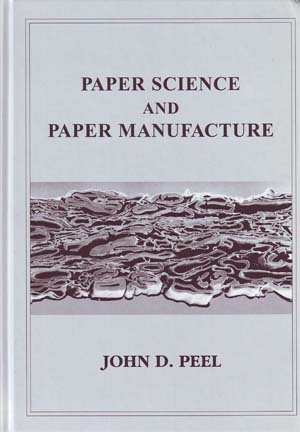
- Factors Affecting the Properties of Paper
- Overall Papermaking Process
- Stock Preparation
- Stock Approach System
- Headbox
- Forming and the Forming section
- Pressing and the Press Section
- Drying and the Drying Section
- Calendering
- Winding
- Surface Treatments: Sizing and Pigment Coating
The Essential Guide to Aqueous Coating of Paper and Board
Ed. T.W.R. Dean, Paper Industry Technical Association, 1997. 552 pages. ISBN 0-9530227-0-6.
Hardcopy version is no longer available. Only a high-resolution scan searchable PDF (211MB). Price £20, VAT free. Contact This email address is being protected from spambots. You need JavaScript enabled to view it.
In the late 1970s and early 1980s the Coating Working Group of the Technical Division of the British Paper and Board Industry Federation published An Operator’s Guide to Aqueous Coating for Paper and Board. The current book is a revision of this original text, performed by the Coating Working Group of PITA. It consists of a well-illustrated text that acts as a primer for anyone new to the subject, which takes the reader through the necessary chemistry, engineering and physics of aqueous coating technology as it applies to paper and board substrates.
Chapter listing:
- Introduction and Basic Science
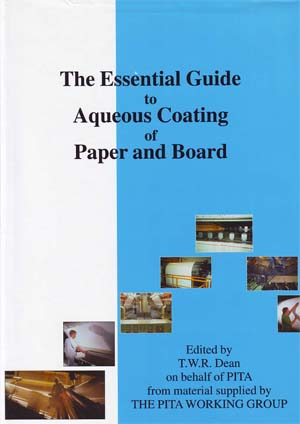
- The Base Sheet
- Aqueous Coating Pigments
- Aqueous Coating Binders
- Aqueous Coating Additives
- Aqueous Coating Equipment and Processes
- Aqueous Coating Mix Formulation and Preparation
- The Drying of Aqueous Coatings
- Finishing
- Customer Satisfaction
Ed. T.W.R. Dean, Paper Industry Technical Association, 1997. Hard cover, 30 x 21.5 cm, 552 pages. ISBN 0-9530227-0-6.
In the late 1970s and early 1980s the Coating Working Group of the Technical Division of the British Paper and Board Industry Federation published An Operator’s Guide to Aqueous Coating for Paper and Board. The current book is a revision of this original text, performed by the Coating Working Group of PITA. It consists of a well-illustrated text that acts as a primer for anyone new to the subject, which takes the reader through the necessary chemistry, engineering and physics of aqueous coating technology as it applies to paper and board substrates.
Chapter listing:
1. Introduction and Basic Science
2. The Base Sheet
3. Aqueous Coating Pigments
4. Aqueous Coating Binders
5. Aqueous Coating Additives
6. Aqueous Coating Equipment and Processes
7. Aqueous Coating Mix Formulation and Preparation
8. The Drying of Aqueous Coatings
9. Finishing
10. Customer Satisfaction
